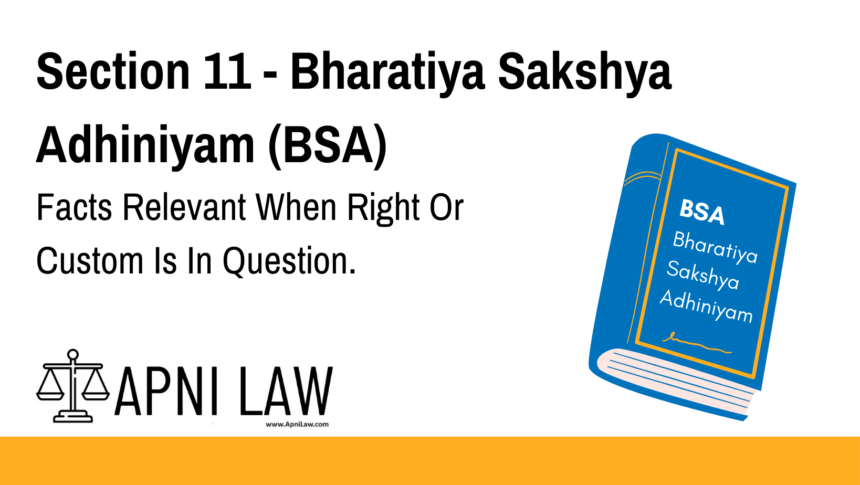Code
Where the question is as to the existence of any right or custom, the following
facts are relevant—
(a) any transaction by which the right or custom in question was created,
claimed, modified, recognised, asserted or denied, or which was inconsistent with its
existence;
(b) particular instances in which the right or custom was claimed, recognised
or exercised, or in which its exercise was disputed, asserted or departed from.
Illustration.
The question is, whether A has a right to a fishery. A deed conferring the fishery on
A’s ancestors, a mortgage of the fishery by A’s father, a subsequent grant of the fishery by
A’s father, irreconcilable with the mortgage, particular instances in which A’s father exercised
the right, or in which the exercise of the right was stopped by A’s neighbours, are relevant
facts.
Explanation
This section is used when the court has to determine whether a legal right or a customary practice exists.
To prove or disprove such a right or custom, facts such as:
- Written deeds or documents that created or transferred the right,
- Past behaviors or transactions recognizing or denying the right,
- Actual instances of use or dispute over the custom,
are considered relevant.
This section is especially important in civil cases involving easements, fishing rights, community customs, religious practices, or inherited land rights.
Illustration (as per statute)
. The question is, whether A has a right to a fishery.
. Relevant facts include:
- A deed conferring the fishery on A’s ancestors,
- A mortgage of the fishery by A’s father,
- A subsequent grant of the fishery by A’s father inconsistent with the mortgage,
- Instances in which A’s father exercised the right,
- Instances where neighbors stopped A’s father from exercising the right.
All these facts help the court understand the historical exercise, recognition, or denial of the right.
Key Concepts
- “Right or Custom” could be:
- A legal right (e.g., right of way, ownership, usage)
- A customary right (e.g., community fishing, village rituals, land usage patterns)
- Both documentary evidence and oral or behavioral patterns over time are relevant.
- A single incident may not be enough to prove a custom—but consistent pattern or long-standing usage strengthens the claim.








